PLANTS IN ACQUARIUM
- Jan 14, 2022
- Arianna Rizzi
- 463 0 0
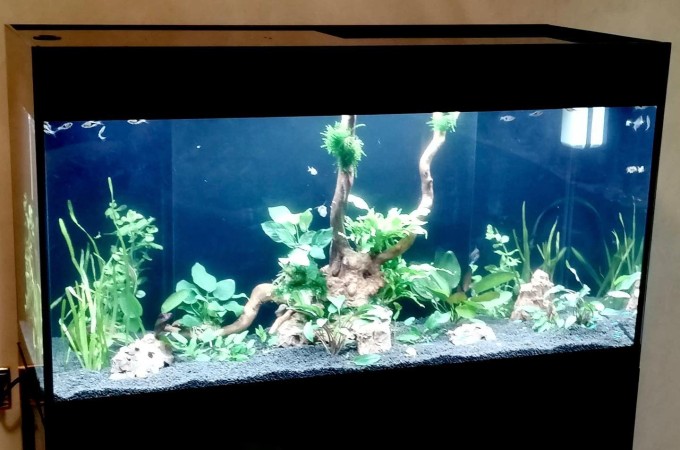
Plants play a key role in the aquarium, offering shade and shelter so that fish feel secure and providing food for herbivorous species. Thriving freshwater plants will restrict algal growth and help to improve the water conditions by absorbing nitrate and giving off oxygen.
It is best to devise a rough planting plan before making any purchases. The standard approach is to have one or two eye-catching central plants toward the back of the tank, with taller plants flanking these and extending around the sides.
Low-growing foreground plants will give your aquascape a more natural look while still allowing you to appreciate the fish and the background flora. Floating plants add another tier of interest and create attractive dappled shadows below.
When choosing plants, make sure they have requirements similar to those of the fish that will live in the tank. For example, the behavior of the fish should influence your choice in fact the bushy plants for nervous fish that like to hide in thick vegetation and broadleaved plants for shade-loving bottom dwellers. Floating plants provide a refuge for fry and spawning sites for bubble nesters, such as guramis. If the fish like to dig in the substrate, position substrate plants behind tank décor, where they are less likely to be uprooted.
THE ROLE OF PLANTS IN AQUARIUM
Contrary to what is often thought, plants do not merely serve as decoration but also make a major contribution to the equilibrium of the aquarium: by day, they absorb carbon dioxide (CO2) given off by fish and produce oxygen (O2). Moreover, they absorb nitrates, the end product of the nitrogen cycle, and thus reduce the concentration in the water.
Plants are similarly useful for fish. Some species (like Ancistrus and Gyrinocheilus) feed on algae that grow on the decor, or even on fine-leafed plants (as in the case of livebearers from the Poeciliid family), though this can spoil the visual effect. Others, such as South American Characins, lay their eggs on the foliage, which helps to keep them out of sight of predators. Fish such as scaklares, watching over their eggs, use large leaves to fan them. When the fry are born, they find shelter in the vegetation – particularly plants with floating leaves - as well as nourishment there, as the plants enhance the development of microorganisms like infusorians, which are a valuable food source.
Finally, if the vegetation is sufficiently lush, it can also provide welcome shade and hiding places for adult fish.
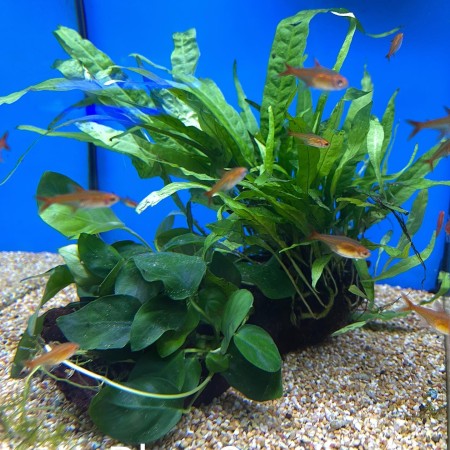
THE ORIGIN OF AQUARIUM PLANTS
All aquarium plants will reproduce in tanks, so there is no point in collecting them in their natural setting. The collection of certain plants from the wild is prohibited.
Aquarium plants are cultivated by specialist companies, mainly in South-East Asia but also in Europe and the United States.
Agricultural greenhouses are used, partly heated by solar energy, or sometimes geothermically, using hot water pumped into irrigation canals. Sunlight may be complemented by artificial lighting if the plants demand this.
Most species are raised with a large part of the plant - or even all of it - outside the water, although the environment is extremely humid. They adapt to the aquarium setting, but tend to change the shape of their leaves when introduced into this different environment.
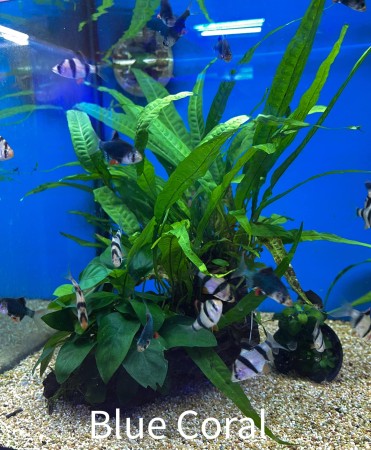
ESTABLISHING NEW PLANTS
After buying plants, return them to water as soon as possible; allowing the leaves to dry out, even for a short time, may fatally damage the plant. Leaves also become bruised by careless handling, so hold the plant by its base or container.
Identify healthy plant keeping an eye out for a few simple clues.
- Leaves: the appearance of plant leaves varies a great deal between species, but generally speaking, leaves should not have any holes, yellow or brown patches, or transparent areas. If they are in a weak condition, many stem plants lose their lower leaves, so check to see if any of these are missing. Nevertheless, if such a plant has good root growth you can still plant it, leave it to establish for a period of time, and then take top cuttings to replace the original plant.
Yellow patches on leaves, particularly toward the edges, indicate a lack of iron of other nutrients. Plants in this condition will recover, but the damaged leaves usually die before being replaced by the new growth.
Brown patches or hole indicate overall poor health, but if only one or two leaves are affected, the rest of the plant may be healthy and you can simply remove the damaged leaves. Leaves that appear transparent and thin in places may be showing signs of physical damage and affected areas are likely to die, often taking the rest of the leaves with them.
- Roots: Good root growth is vital for the overall health of plants, although many plants can survive with little or no root growth by taking nutrients directly from the water through their leaves. These plants are often sold in bunches rather than pots, and close inspection will usually reveal that they are top cuttings and not should grow new roots as soon as they are planted in a suitable substrate. Potted plants should have good root growth, which can often be seen emerging from the pot. The roots need not be long, but should be white and free from obvious damage.
There are few points to bear in mind before you put any plants into the aquarium. To begin with, the substrate, and décor should already be in place, as well as the filtration, lighting, and heating equipment. Secondly, although most plants should be snail-free, you should examine the leaves and stems thoroughly for both snail and snail eggs. It is possible to “dip” plants in a proprietary treatment to kill any snails and their eggs.
Make sure the roots are healthy and remove any damaged leaves and stems, as there are unlikely to recover. Removing the leaves should encourage new growth.
Planting methods vary according to the type of plant and its root structure, but a good planting technique should always sim to minimize damage and encourage new uninhibited growth
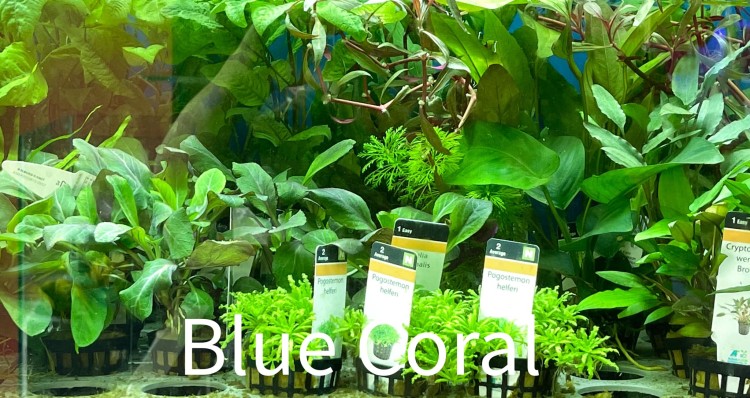
CARE AND MAINTENANCE
Plants need nutrients for growth. They obtain many of these nutrients from the water, but adding aquarium fertilizer will
ensure that they stay healthy. Rich in potassium, phosphorus, iron, and other elements, this fertilizer is available as pellets, which can be buried beside a plant, or as a liquid that is added to the tank water. Another way to boost the growth of plants is to place them in pots of enriched aquarium soil and then sink the pots into the gravel. Never use regular plant potting mix or garden compost, which will poison the fish.
Plants, like fish, benefit from an efficient filtration system, especially fine-leaved varieties, which can become clogged with suspended material. In addition, the gentle currents created by a power filter help to keep the foliage moving, to ensure that no part of the plant is permanently shaded. When the plants are established, you will periodically need to cut back excessive growth or prune straggly plants to encourage new shoots and a better overall shape.


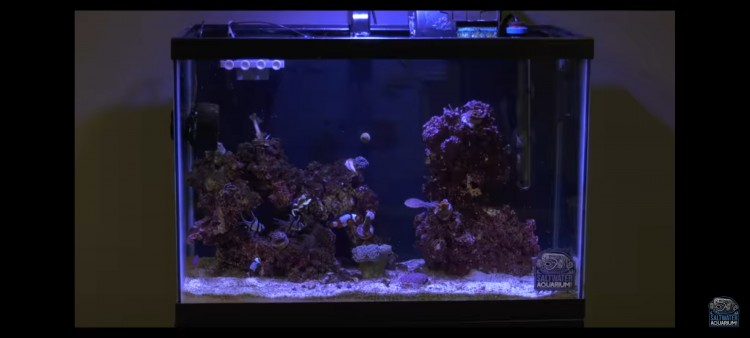



About author